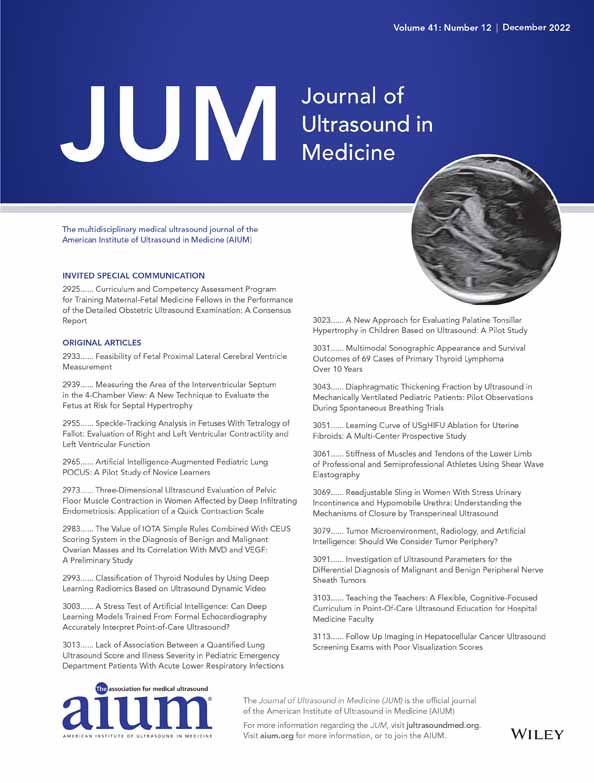Three-Dimensional Ultrasound Evaluation of Pelvic Floor Muscle Contraction in Women Affected by Deep Infiltrating Endometriosis: Application of a Quick Contraction Scale
The authors have nothing to declare and no interests to disclose. No funding was received for this study.
Abstract
Objectives
Using transperineal 3D/4D ultrasound, we evaluated the prevalence of the various categories of a 4-point pelvic contraction scale among women affected by ovarian endometriosis (OE), deep infiltrating endometriosis (DIE), and healthy controls.
Methods
This prospective study was conducted on nulliparous women scheduled for surgery to remove endometriosis, and nulliparous healthy volunteers who did not show any clinical or sonographic signs of endometriosis, who served as controls. Patients were subjected to 3D/4D transperineal ultrasound obtaining measurements of the antero-posterior diameter (APD), both at rest and during maximal pelvic floor muscle (PFM) contraction (PFMC). The difference of APD from rest to maximal PFMC was then calculated as percent change from baseline (ΔAPD) and patients were thus categorized using the 4-point pelvic contraction scale.
Results
One hundred sixty-four patients were considered for the study. Mean difference in APD between relaxed state and maximal PFMC was 23.3 ± 7.9% (range 2.4–40.0) in controls, 20.5 ± 9.0% (range 0.0–37.3) in patients with OE, and 14.6 ± 10.4% (range 0.0–37.1) in patients with DIE (F-test = 19.5, P-value < .001). A significant negative correlation was found between the contraction scale and dyspareunia (rs = −0.17, P = .032), and it appeared to be stronger among patients with DIE (rs = −0.20, P = .076).
Conclusions
PFM function in endometriotic patients could be assessed reliably through this 4-point scale. The rapid identification of women suffering from PFM dysfunction, along with deep dyspareunia, could enable gynecologists to offer them additional therapies, such as PFM rehabilitation.




